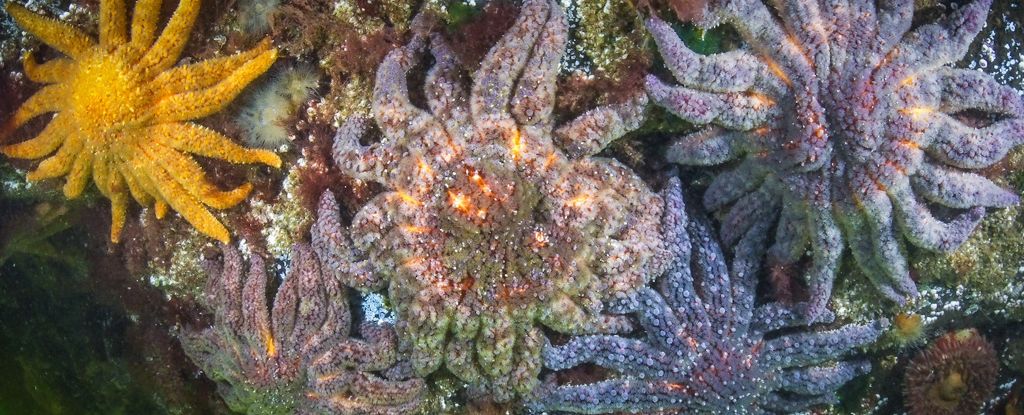
Billions of sea stars have suffered from a devastating decline, primarily due to a mysterious illness known as sea star wasting disease. After years of research, scientists have pinpointed the cause: a bacterium named Vibrio pectenicida. This discovery offers crucial insights into an epidemic that has impacted ecosystems along the west coast of North America and beyond.
The outbreak, first reported in November 2013, has led to alarming declines in sea star populations. Particularly hard hit were sunflower sea stars (**Pycnopodia helianthoides**), which saw their numbers plummet by more than 90 percent. These large, vibrant starfish, known for their striking colors and numerous arms, have almost disappeared from coastal areas stretching from Alaska to Mexico. By 2020, the International Union for Conservation of Nature declared them critically endangered.
The disease manifests through lesions on the sea stars’ bodies that result in muscle disintegration, twisted arms, and ultimately death. This loss of sea stars has profound implications for marine ecosystems. Sea stars play a vital role in controlling sea urchin populations, which in turn helps maintain kelp forests. Without these star predators, sea urchin numbers have surged, leading to the degradation of kelp habitats that are crucial for various marine species.
The research, published in the journal Nature Ecology & Evolution, was led by a team of scientists, including marine ecologist Drew Harvell from the University of Washington. Harvell noted that identifying this bacterium was challenging due to its stealthy nature. Unlike typical pathogens, Vibrio pectenicida does not present visible signs on histological examinations, possibly due to its ability to produce an immune-inhibiting toxin.
The team successfully conducted a series of controlled experiments that isolated the bacterium from infected starfish. They observed that healthy sunflower sea stars exposed to infected tissue began to show symptoms characteristic of the disease, confirming the bacterial origin of the outbreak. Evolutionary ecologist Melanie Prentice led these experiments, which were crucial in establishing a direct link between the bacterium and the wasting disease.
In addition to the direct impacts on sea stars, the ramifications extend to the kelp forests themselves. These underwater ecosystems are essential for various species, including sea otters, seals, and commercially important fish. Kelp forests also absorb carbon dioxide, helping to mitigate climate change effects and protect coastlines from storm damage.
As climate change continues to affect marine environments, the study suggests that warmer waters may facilitate the proliferation of Vibrio bacteria. Some sunflower sea star populations have managed to survive in the colder waters of British Columbia, where the conditions may be unfavorable for the bacteria’s survival.
Understanding the dynamics of this disease is critical for the recovery of sunflower sea stars and the health of the ecosystems they inhabit. Alyssa Gehman, a marine disease ecologist from the University of British Columbia and the Hakai Institute, expressed the urgency of this research, stating, “Understanding what led to the loss of the sunflower sea star is a key step in recovering this species and all the benefits that kelp forest ecosystems provide.”
As scientists continue to explore the intricate relationship between climate change and marine health, the findings provide hope for the future of sea stars and the vital ecosystems they support. The ocean’s health is intricately linked to the well-being of its inhabitants, making it imperative to address the challenges posed by emerging diseases like sea star wasting disease.






